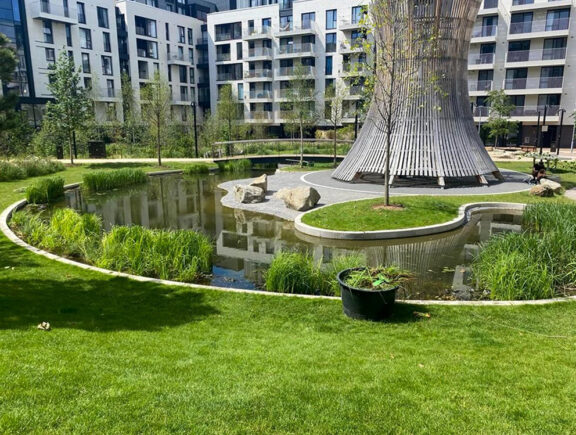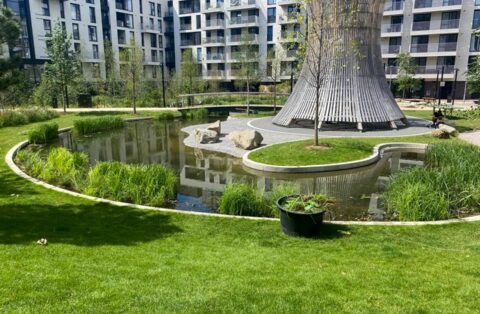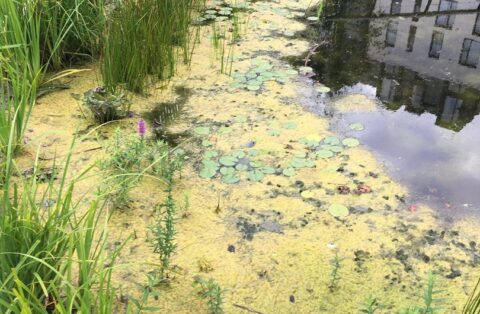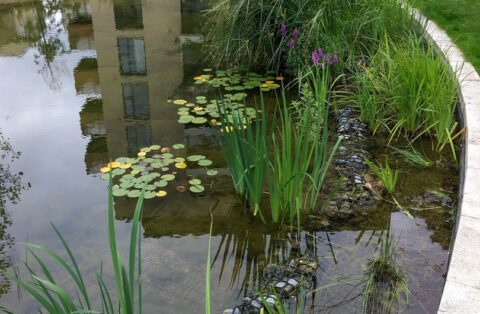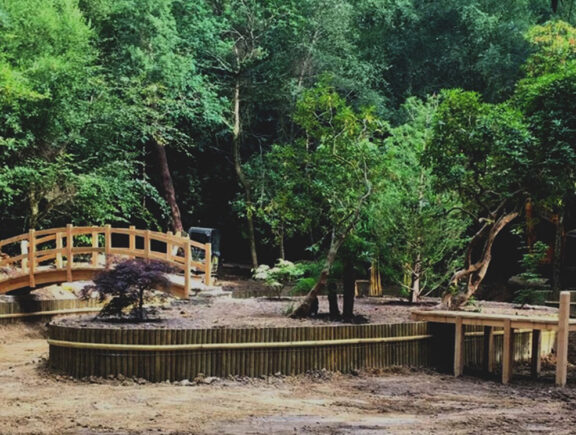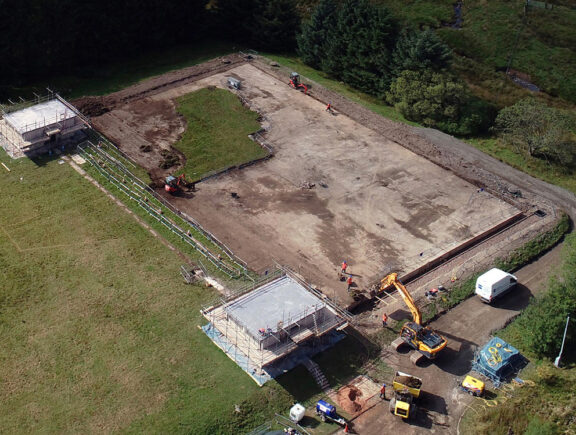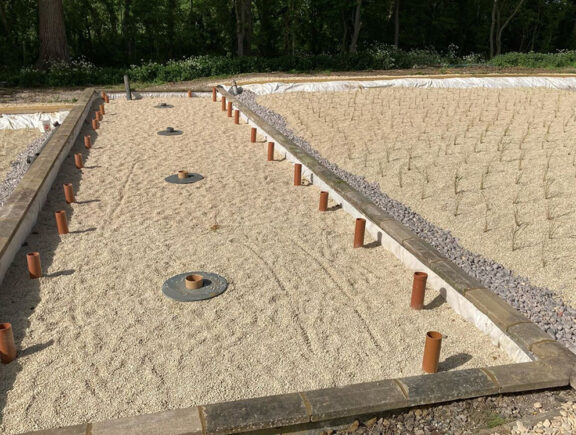Today, the pond is the focal point of the complex’s residential gardens, enjoyed by hundreds of residents.
Since its installation, the pond has experienced issues with overgrowth of aquatic flora and problems with its pump systems damaging the function and appearance of the pond. Stonbury was invited back this year on a routine maintenance contract to keep on top of these issues and return the pond to its former glory.
To reduce the growth of algae, the pond is planted with marginal vegetation which takes up excess nutrients. Aquatic weed is desirable for oxygenating the water and contributing to the pond’s ecosystem. Left unmanaged, the vegetation encroaches into the pond and the dead remnants from the previous season can be both unsightly and release nutrients back into the pond.
Algal growth is common in many ponds, particularly in new features where the plants are not fully established. This issue is especially problematic at the beginning of the growing season when temperatures are increasing before most aquatic plants begin to sprout. In these conditions, algae thrive, taking up all the excess nutrient in the water not being used by other aquatic flora.
The pond uses pumps, both to filter the water through the gravel to contribute to water clarity, and to recirculate water, improving dissolved oxygen levels in the water and preventing stagnation.
Stonbury has proposed eight maintenance visits over the year with frequency increased over the summer period to help deal with the matters described. The team has also scheduled winter cutbacks that help deal with unsightly litter build-up, along with quarterly mechanical and electrical visits.
As this programme began late this year, we were able to the combine the missed visits from the early part of the year to address the previous neglect. On our first visit, the team noticed that the flow impeded, and we diagnosed a faulty pump that draws water through the gravel filters. This was replaced on the following visit and now the system is functioning correctly.
Each visit normally consists of, but is not limited to:
- Maintaining and cleaning filters
- Checking controls and conducting electrical safety checks
- Litter collection and removal of debris
- Vegetation management, including checking for non-native species
